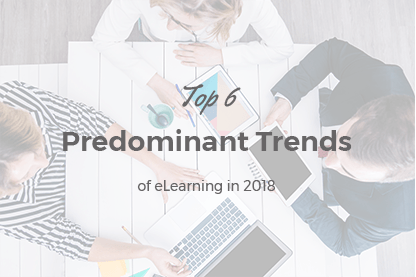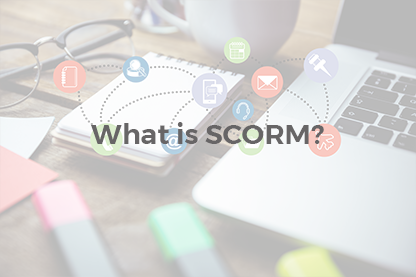How do you make people watch NFL and NBA games during garbage time? Could “World of Warcraft” be helpful in the classroom? What are the E-Learning concepts most frequently mistaken for each other? This article will answer these and other questions.

In fact, we might briefly cover it even here in the introduction. Here they are in the reverse order. We will speak about gamification and game-based learning. As similar as they might sound to the layman, they are completely different and we’ll have a take on their subtleties later on.
Big-time video games can be found on the shelves of teachers worldwide and sometimes may be used during the educational process.
We can list “World of Warcraft”, “Civilization” series, “Minecraft” among the commercial hits in the gaming industry that could be useful for educational purposes.

As for NFL and NBA “garbage time”. The winning team is beyond the reach with 30-40 points differential in the game. Why do people keep watching it? Some of them play fantasy football, that’s why!
This is the example of gamification in action.
We’ll discuss why both gamification and game-based learning are important, what is the difference between them and their relevance for modern-day E-Learning.
Gamification
Gamification is the trend in sports, sales, education and plenty of other industries. According to its definition , it is the application of game design elements and game principles in a non-game context.
The range of application of gamification is very wide. It could be used everywhere - from coffee shops and local bars to educational activities of all shapes and sizes. Let us list a couple of example of its use. The most obvious comes from the above-mentioned American football and its fantasy leagues .

Sometimes people watch games for the love of football. In some cases, it is more that. 56.8 million US and Canadian citizens play fantasy football.
The fans of these gamified activities (game within the game) count supplementary stats and put some extra attention to the selected players to get up the leaderboards. It creates the interest to otherwise skipped elements of the matches which benefits TV right owners that won’t be running their ads in vain.
Gamification is widely used in e-commerce. There are examples of turning the work environment into some sort of sports arena that boosted sales for the business.

Director of sales, Mr. Schwall was looking for a way to improve the performance of his sales team unit. He created transparent leaderboards that displayed the progress of top sellers via Salesforce CRM. That made a positive impact on employees’ engagement level. We won’t dive into the subtleties, but incorporating fantasy football-like gamification schemes to the sales team lead to 18% spike in outbound calls and doubling the percentage of calls that resulted in an appointment.
You can read the details of the case here.
Naturally, gamification is a perfect fit for educational purposes.
One of the most remarkable applications of fantasy sports model of gamification is Fantasy Geopolitics by Eric Nelson.
This school teacher applied principles of gamification in the classroom. We won’t dive too deep into his project. However, we will extrapolate the principles Mr. Nelson used to another E-Learning product.
We will take Duolingo, an online language learning app that has many gamification tricks up its sleeve. Those are leaderboards, activity points for all kinds of participation. And there are so-called class="italic-font" “essential steps in building a meaningful gamified system” mentioned by Nelson.

If all starts with the identification of the behavior you want to change or the skill you’d like to master. In our case, this could be the lack of vocabulary of the studied language.
Then comes the choice of the right game mechanics. Duolingo doesn’t use algorithms similar to the ones fantasy football does. But it keeps the track of all the points earned by the users and collects the data into the leaderboards.
The important part of the process is in making the transparent scoring system. There must be an opportunity to take the top of the leaderboard in your community. Sustain the engagement by being ready to implement user suggested modifications. Duolingo has the big community and managers make adjustments according to the feedback to avoid some sort of loopholes in gamification schemes.
If you have all parts of his plan, you are able to harness competition to foster the desired behavior change. In the case of Duolingo, people will be more inclined to learn even more new words in the studied language as they’d like to get ahead within their community etc.
That way, we are able to see how steps in building a gamification system might be similar, though gamification products applying it would be completely different.
Game-Based Learning
Game-based learning is another cup of tea. Educational games explicitly designed with educational purposes, or which have incidental or secondary educational value. They use learning games to achieve instructional goals.
We promised you World of Warcraft and Civilization strategy series as examples of the game-based learning application
By building their own civilization, one is able to get to know the basis that is required for this and learn a fact or two about historical events and dates, for instance. As for World of Warcraft role-playing game, controlling avatars and studying hero’s journey integrate plenty of curriculum content to Peggy Sheehy, an experienced practicing educator. Even first-person shooters can be helpful for getting certain knowledge. Those who played Counter-Strike: Global Offensive may possess knowledge that AK-47 magazine capacity is 30 rounds and Desert Eagle is a powerful gun that costs more than dual Berettas
While it is a team shooter that is nowhere near a simulator, it was a no-brainer anyone would remember these details in the process.
As for learning games, they have two goals - one is general (what players should do to win/achieve certain level) and the other one is learning goal (what players should grasp while playing it).
We will take for example one of the E-Learning products Ticken - and see how it utilizes game-based learning.

Ticken is an online based typing course school launched in the Netherlands with the help of Martin Beijer. It came at an affordable price and won the 2010 Netherlands e-Commerce Starter Award.
The course contains inbuilt games. While the general game goal is to catch the eggs “falling from the different hens on the tree”, it would not teach you to be a farmer, as you could guess. The learning goal is obviously in increased typing speed and accuracy. The longer you practice in catching those eggs, the better grasp of the typing technique you develop
The games could be simple, complicated, low-budget, Hollywood-blockbuster look-alike - as long as they have properly developed content and high engagement level - they could be used as a part of game-based learning activities.
The Difference between Gamification and Game-Based Learning
To understand how the concept of game-based learning is different from the concept of gamification, we’d like to take you to the bar. Metaphorically speaking. Perhaps, we believe in education power everywhere.
Imagine your local sports bar has opened its leaderboard of the beers its visitors drink in a single visit.
The bartenders that way use gamification to get you involved in heavy drinking to sell you more beers.
However, these same bartenders don’t aim to teach you anything useful. It is doubtful one is able to benefit from knowing that Guinness uses harp as a part of its emblem for over two hundred years.

The pub quiz is closer to game-based learning, though. You will definitely know something new in the process, so it has a vague but still, a learning goal aside from the main goal to have fun and get to know the winner in this intellectual battle.

That way, gamification has a wider application range as you could have already guessed (often used in e-commerce). In respect of education, the goal is more or less the same - keeping the learner engaged and motivated.








